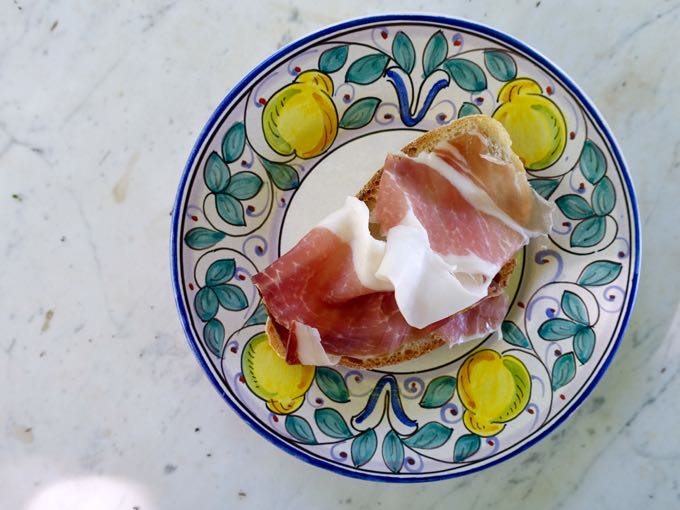
Sometimes it takes a nudge to remind you of things you take for granted. In my case the thing was food related (no surprise there) and the nudge came in the form of a perfect little cookbook that arrived in the mail a few weeks ago.
The cookbook was written by Sara Jenkins and is part of the incredibly beautifully designed series being produced by Short Stack. I first noticed the series on Instagram because I was struck by the graphic covers that started showing up in everyone’s feed. The brilliant idea behind these small booklets is to commission one talented chef to look at one common ingredient and produce a dozen delicious recipes.
Which brings us right back to me and my nudge.
Prosciutto. It’s so omnipresent in Italian daily life that I just never think about it at all. I almost never order it in a restaurant (why would I? When I could just as easily eat it at home?) But then again I almost never buy it to have at home, because….well, I’m not sure why. Too many other pork products in the house already?
But Sara Jenkins’ Prosciutto di Parma reminded me what a perfect food this is. Especially when it come to summer cooking. Or, should I say, non cooking.
While Sara’s little cookbook is full of great recipes I gravitated right away to the ones that required little or no cooking. Summer has hit here, and it’s hard to think of turning on any kind of heat. I had picked up some prosciutto at the farmer’s market in Todi (see the little video below) (and try not to cry) fully prepared to make her reipce of Fried Squash Blossms stuffed with ricotta and prosciutto, but somehow the idea of frying on s summer Sunday afternoon just didn’t appeal, so that rustic prosciutto ended up on a piece of bread and became breakfast. (see above) (but try not to drool)
Back in Rome, I bought some more prosciutto, this time Prosciutto di Parma. The prosciutto I had bought in Todi, hand cut in the market, is typical of Umbria. A bit on the salty side, it’s usually from a pig that is a bit smaller, a bit leaner and the prosciutto is a bit more toothsome. I love its rustic texture and it’s usually what I gravitate towards, since in fact it’s what is available directly from the farmers I frequent.
Prosciutto di Parma, on the other hand, is a whole other animal. Literally. These are pigs raised and fed to provide a delicate tasting and super tender prosciutto. One of the few pork products that is allowed to be imported into the United States from Italy, it is pretty easy to find (but not cheap). It’s a luscious wonderful thing, and while you can cook with it, my preference has always been to enjoy its silky texture as is, in all it’s cured perfect beauty. And in fact I’d always thought of prosciutto of more of a snack, or at the most a sandwich filling. I almost never think of it as the main attraction in a meal.
But it was while flipping through Sara’s book, on a humid hot night in Rome when I had invited guests for dinner (what was I thinking?) two of her recipes came to the rescue.
Or should I say non recipes.
Sara advised me to wilt a mess of greens (I used Swiss chard, but feel free to use anything) drain them, and while still warm, drape paper thin slices of prosciutto over the top. The warmth of the greens just barely heats the prosciutto but does manage to melt the fat around the edges just enough to bring a porkiness to the entire dish.
Sara’s other suggestion is of course something I eat often: the pairing of buffalo milk mozzarella with prosciutto. But even here, I’d never have considered serving it for dinner, since it’s usually what I’m grabbing as a filling for a panino while rushing to catch a train. But take the bread out of the situation, and substitute a beautiful platter, a drizzle of olive oil and dinner is served.
Actually bread isn’t out of the situation completely. (is it ever?) A loaf of crusty bread goes without saying, right?
Do you have any brilliant no-cook summer ideas? I’d love to hear them. In the meantime, thank you Sara for the nudge. These two recipes will be in rotation at our house all summer long.
You can find the Prosciutto di Parma, by Sara Jenkins here.
The books are exquisitely produced, and collector’s items. Each book is printed locally on high-quality paper and stitch-bound by hand using baker’s twine. They are small things, and you can buy them separately or subscribe to the entire series. Read more about the company here
I received a copy of Prosciutto di Parma to review from Short Stack.
Ceramic information: The plate in the first photograph,with the pears, is from Sberna, in Deruta Umbria, as is the large blue and white platter holding the greens and prosciutto. The other brightly colored plates, with chickens, are from Solimene in Vietri sul Mare.
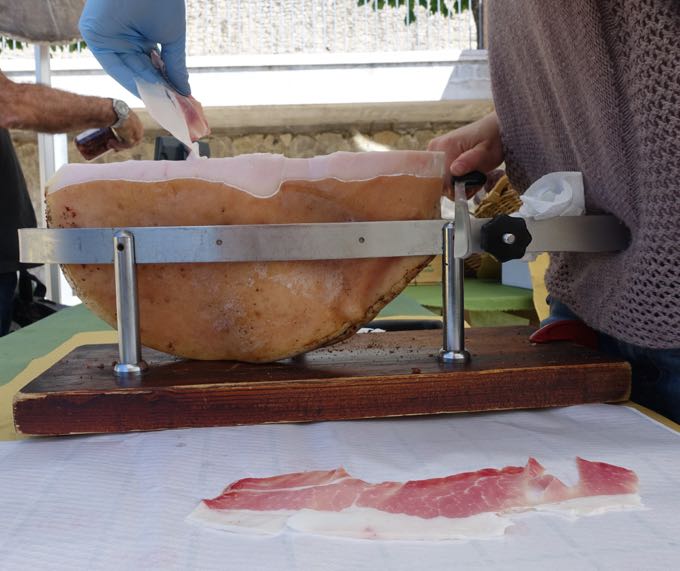
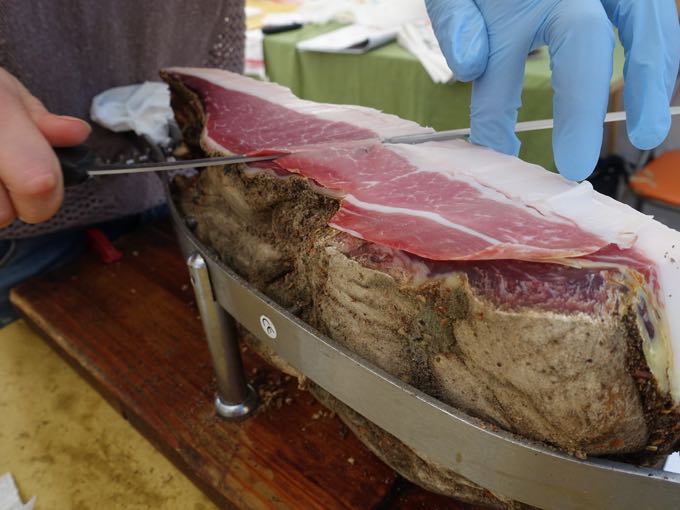
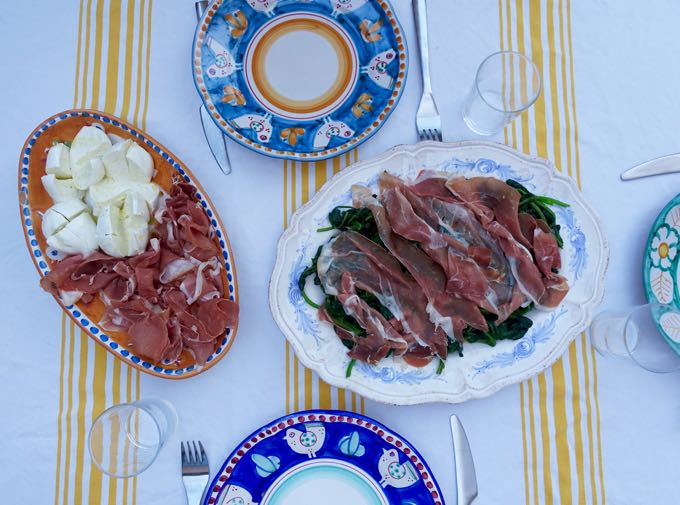
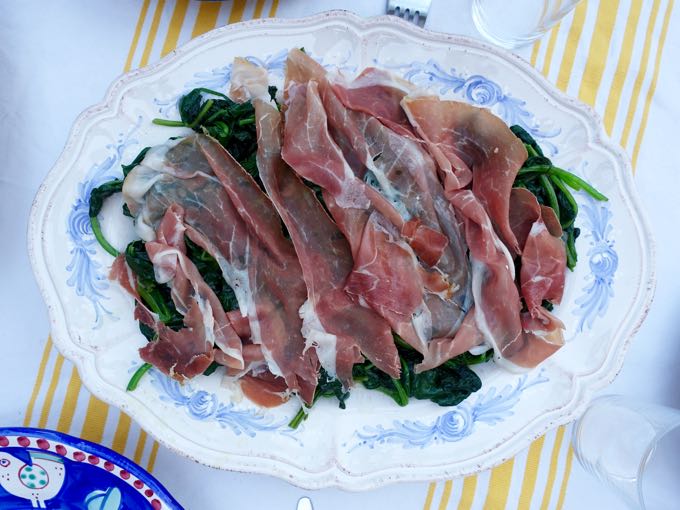
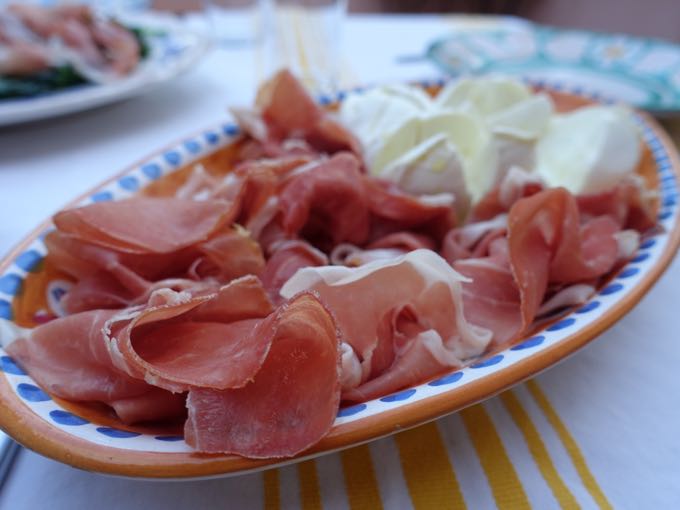
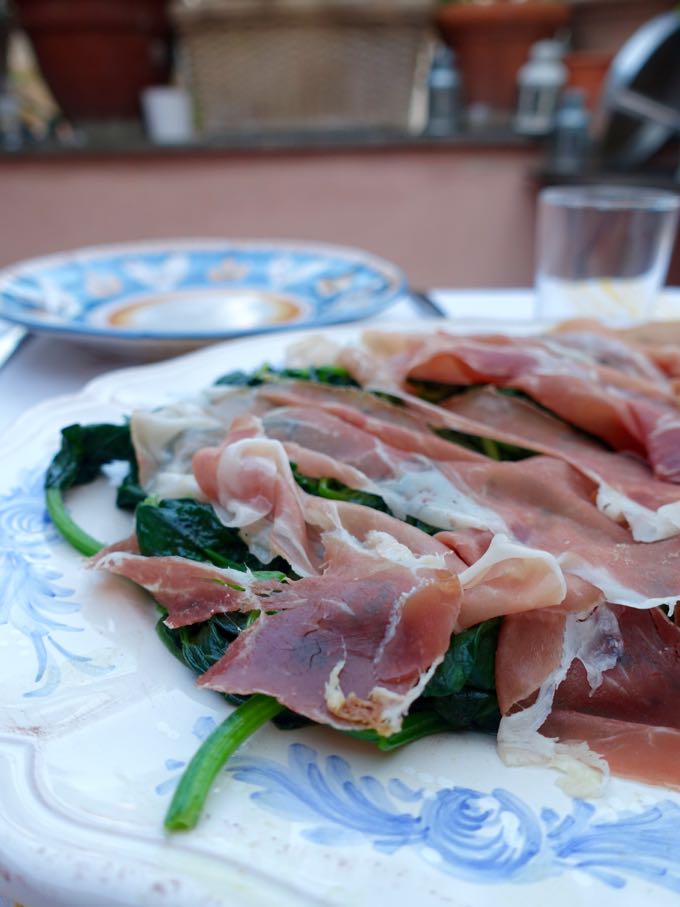
Oh, to live in Italy where prosciutto di Parma is omnipresent in everyday life! My favorite local grocery store sells this and on the occasions when I do buy a few slices, I savor every single bite because it is quite pricy. I will live vicariously through your prosciutto posts and it will certainly show up on my table a few times this summer. Thank you for sharing la bella vita!
I take argula and wrap prosciutto around it. Drizzle with a bit of balsamic or a bit of olive oli and lemon. Sometimes maybe a bit of pamesan or pecorino in with the argula. You can also dress the argula 1st but I find it makes it wilt too much.
That’s a keeper.
Hi Elizabeth,
Thank you for your delicious photos which make me just want to run out and buy some crusty bread and a few slices of melt in your mouth proscuitto for breakfast!
I am so fortunate to be able to buy Proscuitto di San Daniele here in Australia – I first tasted this amazing product from Fruili in the Udine province, north eastern Italy, at the Salone del Gusto in Torino and fell in love with it as it is less salty than many others and has a sweet and luscious taste.
Thank you for your continuing temptations from la bella Italia. xx
I love San Daniele as well, and you’re lucky you can find it locally.